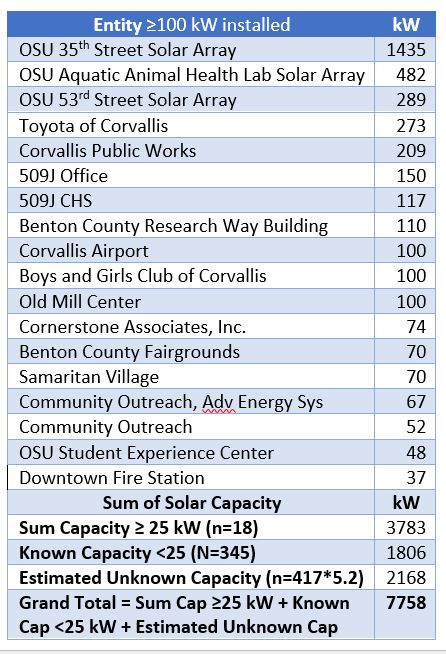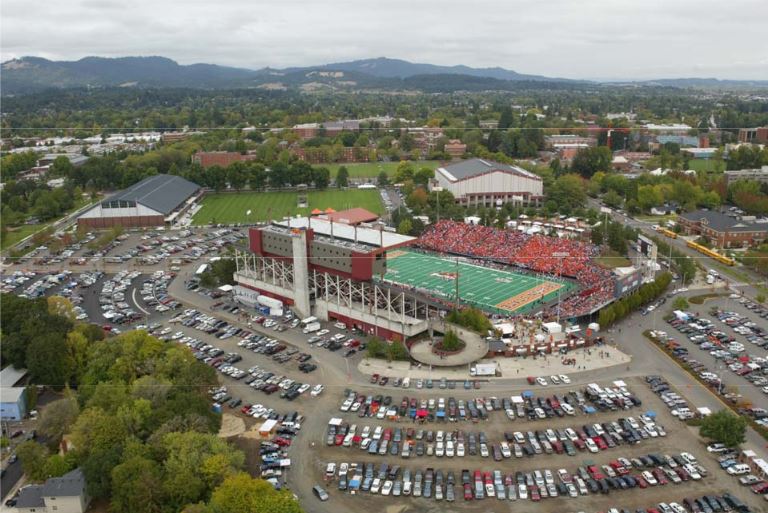Go All-Electric
One action to reduce the impacts of climate change is to get one’s home off of fossil fuels. I had natural gas (methane) space and water, and cooking. My story is …
My gas furnace functioning deterioriated in the winter of 2016. I looked at natural gas and electric options and chose an electric, all-house heat pump and air handler to replace my gas, forced-air furnace. A few years later, I replaced my gas water heater with a heat-pump water heater. In 2019, my gas stove needed replacement, and I installed an induction stove. Finally, I added a heat pump dryer. It replaced an electric dryer, but is lower heat and less damaging to clothes.
Why do this? Getting off fossil fuels is one reason. Natural gas is mostly methane that is a much more potent greenhouse gas than carbon dioxide. Methane, while more potent than carbon dioxide, breaks down much faster. Thus, removing a very potent gas that breaks down quickly acts quickly to reduce greenhouse gas emission heating.
Because of their danger, it is likely fossil fuels may be taxed, raising my operational costs in the future. My operating costs, currently, are 10% lower than when I was heating with gas.
Air conditioning projects me from hotter summers. I loved cooking on a gas stove, but the speed and control of an induction stove is as good. My air handler has a HEPA filter, and I had no smoke with the large forest fires during the late summer of 2020. During the record heat of 2021, the air conditioning provided a cool and comfortable house, especially each night when it was time to go to bed. Indoor air quality now has no NOx that is a byproduct from burning natural gas. My partner says, “Í’m so happy not to worry about natural gas leaks.”

Corvallis Solar Capacity
- How much solar is there in Corvallis? 8 MW, less than 10% of use
- What caused the growth? Subsidies
- Why did solar installations decline in 2017? End of subsidies
- What has the growth pattern been? Slow continued growth
- Does solar generation show up in electricity and gas usage? No
- Is the solar capacity addressing climate issues? Minimally
- What were methods for conducting this analysis? Local permits

Climate, Car Dependence, and Land Use
Cars Are Very Land Intensive

Corvallis Area Devoted to Cars In 2015, Corvallis allocated 25% of its land to car dependence and the area devoted to each car is equal to the size of the average house.
Cars require streets, parking spaces, and buffers to protect pedestrians, cyclists, skateboarders, scooter riders, and others involved in active transport. Commercial vechiles and transit share the roads with cars. How can this space be fairly and equitably allocated?
Parking Interactions
Parking Practices in Corvallis
The Before
Rick Williams Parking Audit White Papers
Does every car need 8 parking spaces?
When parking is not available where a driver would like it, parking management can provide the convenience of a space and funds to sustain the transportation system.
Off-Street Parking Mandates

Overall mandated parking (governmentally required) is 25 to 50% greater than needed and on-street parking has a higher occupancy rate than off-street parking
Townhouse and Residential Parking Near OSU

Neighborhood context like car storage needs of residents, commuter parking needs, commercial traffic, and daily needs affect parking throughout the day and night.
Parking Futures?
The future of parking will be affected by many unknowns. These include transit, shared mobility, and the availability of autonomous travel. Autonomy could evolve as something that brings a good to purchaser’s destinations or goes from the user to pick up goods
Uses of Streets
Since parking is one of the many uses of streets, before setting any parking policy, the purposes for streets should be clearly stated and parking be allocated accordingly. Priorities and purposes include, in the order below, are:
- Public Safety (ambulance, fire, police, disaster evacuation and recovery);
- Commerce and Trade (deliveries and shipments of goods and services to support of a vibrant economy; commercial and public purposes; uses to support local businesses);
- Connectivity (transportation routes to move people from activity to activity such as jobs, education, shopping, visiting, health and personal care, cultural events, pet walking, recreation, and any other activities); connectivity should prioritize persons who are mobility challenged, pedestrians, commercial vehicles, transit, bicycles, personal motorized vehicles)
- Utility and Ecological Pathways (water, sewer, storm water, gas lines, electric and digital cables, rain gardens, bioswales);
- Culture (celebrations, parades, and events [Saturday Market, Open Streets, Fall Festival], public gatherings, education [Safe Routes to Schools, food booths and tables/bike corrals during events; art and architecture for design, community-provided art and sculpture [ex.: 1st Street and Madison Ave Corridor], street painting and integration, plantings in roundabouts and adjacent to streets);
- Vehicle Storage (convenience and accessibility for shoppers, clients, patients, residents, students and others).
Parking is affected by the neighborhood context. Shopping, education, services, storage, and daily needs all affect parking utilization. Each neighborhood has its own set of special circumstance.text
The After
Corvallis has a history of mostly free parking. It has three parking districts. In 2019, it declared
Climate, Land Use, Parking References
- Badger, Emily, The myth of the American love affair with cars, The Washington Post, 2019.
- Buehler, Ralph, 9 Reasons the U.S. Ended Up So Much More Car-Dependent Than Europe, Bloomberg CityLab, 2014.
- Chester, Mikhail, Arpad Horvath and Samer Madanat, Parking infrastructure: energy, emissions, and automobile life-cycle environmental accounting. Environmental Research Letters, 5(3).
- Cortright, Joe, “The Price of Parking, CityCommentary, 2016.
- Corvallis Public Works, Transportation System Plan, 2018.
- Crawford, J.H, Carfree Cities 2000.
- Dougherty Conor, The Capital of Sprawl Gets a Radically Car-Free Neighborhood New York Times Nov 1, 2020:BU1.
- ECONorthwest, Corvallis Housing Survey: Attitudes of Individuals Who Work in Corvallis and Live outside the City Limits.
- Edmonton, Parking Rules for New Homes and Businesses, See “Benefits of Open Option Parking.”
- Federal Highway Administration, Contemporary Approaches to Parking Pricing: A Primer.
- Hume, Edward, “The Absurd Primacy of the Automobile in American Life,” The Atlantic, 2016.
- Kittelson and Associates, Inc. Corvallis On-street Parking Utilization Study May 2016.
- Kittelson and Associates, Inc. City of Corvallis/OSU Joint Neighborhood Parking Study Findings November 2015.
- Mehta, Vikas, The Street as Ecology, INCOMPLETESTREETS, 2014. Nguyen, Mai, Iana Shevtsova, and Court Smith, Transportation Choices: What Drives Us? .
- Oregon Department of Land Conservation and Development and
- Oregon Department of Transportation, Transportation and Growth Management Plan.
- Oregon Department of Transportation, Parking Demand Management and Pricing, with examples from other Oregon Cities.
- Oregon Global Warming Commission, 2018 Biennial Report to the Legislature, 2019.
- Oregon State University, OSU PARKING UTILIZATION STUDIES.
- Oregon Transportation and Growth Management Program, Cool Planning: Handbook on Local Strategies to Slow Climate Change.
- Petry, Jeff, Sparks of Creativity, Looking to revitalize a parking program? Eugene, Oregon, found creativity was the key.
- Petry, Jeff, Shooting for Three: How a neighborhood, a university, and a city balanced the triple bottom line.
- Petry, Jeff, Warm and Fuzzy Parking: How one parking authority stayed on task while working to reflect its community’s values and soften its image.
- Rosenthal, Elisabeth, “The End of Car Culture.” The New York Times.
- Segedy, Jason, Baby Boomers Aging In A Car-Dependent World. The American Conservative, 2019.
- Shills, Gregory Americans Shouldn’t Have to Drive, but the Law Insists on It.” The Atlantic, 2019.
- Shoup, Donald, The High Cost of Free Parking 2005.
- Shoup, Donald, Parking and the City 2018.
- Shoup, Donald, City Lab summary of his approach, Parking Reform Will Save the City. Summary by Bloombery CityLab. See “The Three Essential Parking Reforms” Sightline, Transportation Articles, The Vancouver Sun.
- Sightline The Hidden Costs of �Over-Parking� in Our Cities.
- Snyder, Mary Catherine, Flex Zone/Curb Use Priorities in Seattle.
- Speck, Jeff, Walkable City: How Downtown Can Save America, One Step at a Time, especially Step 3: Get the Parking Right.
- Strong Towns, Action Lab. Search for resources, examples, contacts, and topics.
- Strong Towns, How to Get Rid of Parking Minimums.
- Strong Towns, https://dalspace.library.dal.ca/handle/10222/72852 Strong Towns, Map of Cities That Got Rid of Parking Minimums.
- Strong Towns, Parking minimums are costing your city. For a way forward, look to Edmonton. See “Lessons from Edmonton.”
- Strong Towns, Will Edmonton Be the First Major Canadian City to Eliminate Parking Minimums?”.
- The Victoria Transportation Policy Institute, Parking Pricing Implementation Guidelines.
- The Victoria Transportation Policy Institute, Parking Management in Transportation Demand Management Encyclopedia.
- The Victoria Transportation Policy Institute, Todd Litman, Parking Requirement Impacts on Housing Affordability, 2010.
Parking Study Methodology
Clustered Walkable Village
The ALIVE Proposal Applies a Landscape-based, IMAGINATIVE Vision for Embraced Change

Goals:
- Improve public health, increase walkability, advance bike safety,
- Expand lifestyle choices,
- Reduce the effects of climate change and car dependence,
- Save money and resources, and
- promote community livability.
12-Step ALIVE
ALIVE Alternative
